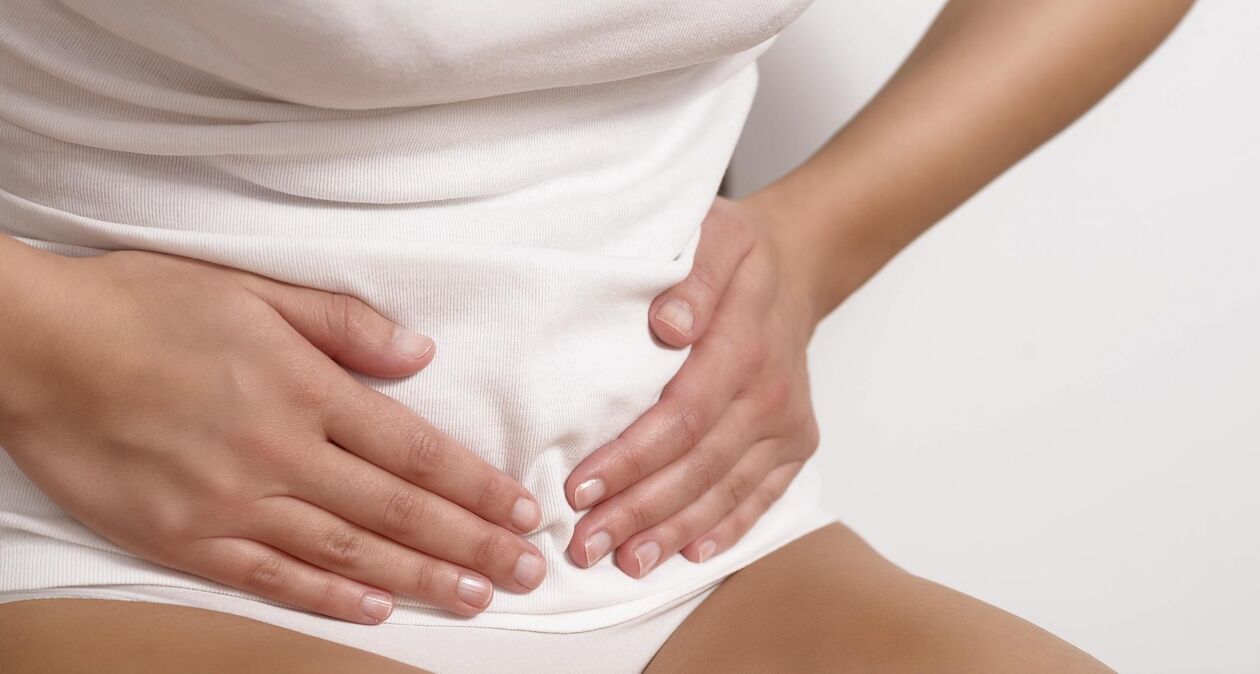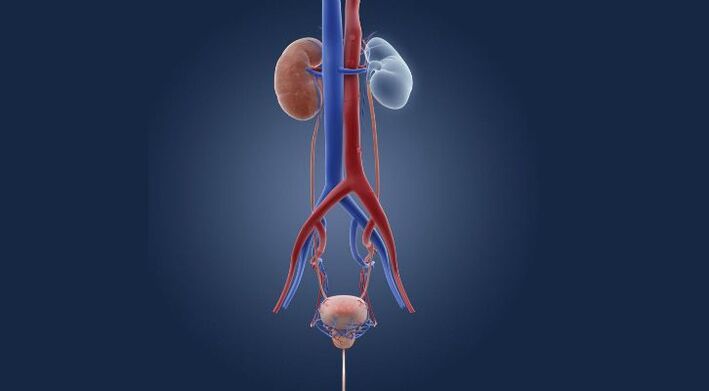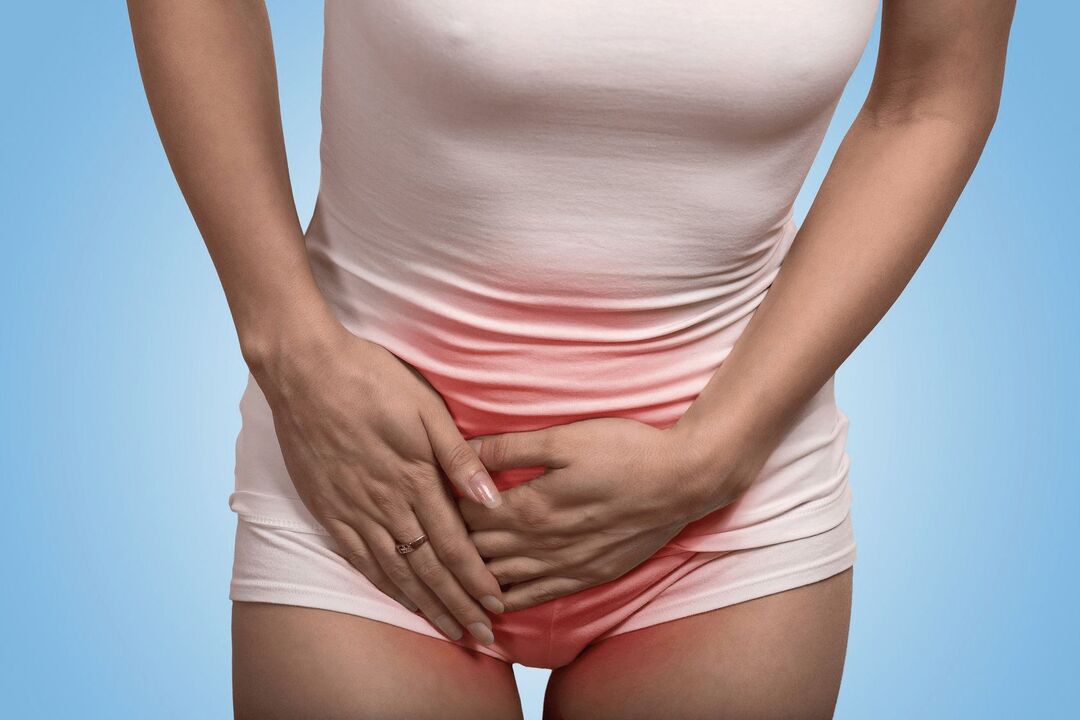Cystitis is inflammation of the bladder. This organ is used to accumulate and excrete urine, but if the lining of the organ is damaged, its function is impaired and the person begins to experience unpleasant symptoms. In most cases, the pathology affects only the mucosa, but sometimes the inflammatory process also extends to the muscle tissue. Interstitial cystitis is the most difficult to treat.
The disease mainly affects women and is related to the anatomical features of the urethra. Inflammation in men is rarely present, often as a comorbidity in the context of chronic prostatitis.
symptom
The signs of cystitis are so obvious that it's hard not to notice them. Usually, the disease begins acutely, which is why patients pay attention to obvious discomfort in the urinary tract. Manifestations in pathological descriptions:
- frequent urination;
- a feeling of incomplete urination;
- cramps and pain when urinating;
- increased body temperature;
- a mixture of blood in the urine;
- cloudy urine (due to the presence of pus);
- Nausea, pain like during menstruation.
Despite characteristic symptoms, the disease can give different presentations. Hematuria is not always present, but severe pain can only resemble mild discomfort. In any case, if pathological signs appear, it is necessary to consult a doctor for an early diagnosis. The disease in the early acute phase is best treated, but the chronic phase takes longer to combat.
Forms and types of chronic cystitis
Cystitis is acute and chronic depending on the nature of the inflammatory process. Depending on the source of the development, the disease can be primary (an independent disease) or secondary (inflammation spread from adjacent areas, such as the kidneys).
Depending on the area of damage to the bladder lining, cystitis can occur:
- total (general);
- focus.
The following clinical forms of cystitis are distinguished:
- Catarrh - non-purulent inflammation of the mucosa of the bladder;
- mucus - purulent lesions of the submucosa;
- Granuloma - accompanied by a mucous membrane rash;
- hemorrhagic, characterized by the release of blood in the urine;
- Interstitial cystitis - inflammation spreads to all layers of the organ.
A number of rarer forms are also distinguished: ulcerative, cystic, gangrenous cystitis.
The various inflammatory diseases of the bladder fall into two broad categories:
- Certain cystitis caused by sexually transmitted agents: gonococcus, ureaplasma, chlamydia.
- Nonspecific cystitis - through the erroneous development of opportunistic flora, which represent no disease under normal conditions (eg, Escherichia coli).
Finally, noninfectious cystitis was combined into a separate group. They may occur under the influence of allergic factors, radiation, trauma, thermal effects, parasitic toxins.
Causes of Cystitis

In most cases, the development of bladder damage and inflammatory processes is associated with the penetration of infection, however, cystitis can be toxic and allergic in nature. When an infection enters, the disease can spread in a number of ways:
- Ascent - from the urethra through the urethra - affects the bladder;
- descent - in this case, an infection occurs due to inflammation of the kidneys, passing through the ureters to the bladder;
- Lymphatic - in the presence of genital lesions, the flow of lymph through the pelvic organs;
- Bloodborne - the infection enters with the blood, but this route of transmission is the rarest;
- Direct - If the abscess ruptures in the bladder, the pathogenic flora directly invades the bladder cavity, it may also be during organ cannulation, infection during surgery.
In most cases, E. coli causes cystitis. It occurs in 80-95% of simple pathological cases. This bacteria is normally found in the rectum, but when it enters the urethra, it triggers an inflammatory process. Enterobacteriaceae, staphylococcus, fungi, sexually transmitted infections can also cause the disease. You can also notice symptoms of the disease within a day after sex (postcoital cystitis), often before symptoms of vaginitis or bacterial vaginosis appear.
Factors that lead to the development of cystitis
The body with good immunity can cope with the presence of pathogenic flora, so the patient's symptoms of cystitis do not appear. But it manifests itself when exposed to a few factors:
- damage to the bladder mucosa;
- Circulatory disorders of the pelvic organs;
- low temperature;
- The presence of other lesions in the body, such as a kidney infection;
- Decreased body defenses;
- Inflammatory diseases of the reproductive organs;
- Lack of vitamins and minerals in the body;
- hormone imbalance;
- unhygienic, wearing synthetic underwear;
- stress and overwork;
- Delay bladder emptying.
In the presence of these factors, cystitis will develop rapidly, and chronic pathology will enter a relapsing stage. Therefore, in order to prevent recurrence, it is necessary to exclude the influence of predisposing factors on the body.
Causes of transition from acute inflammation to chronic phase
Inflammatory processes in the bladder can occur due to various pathogens. The most common is bacterial, but there are also cystitis and viral and fungal causes. If the acute disease is diagnosed in time, cystitis is properly treated, and the patient follows all the recommendations of the doctor, the pathological process can be completely eliminated and recovery will occur.
But women often put off seeing a doctor and try to treat cystitis on their own, hoping it will all go away on its own. As a result, precious time is wasted. Microorganisms multiply actively and the intensity of inflammation increases. Microbes that fully "settle" in the bladder do not easily relinquish their place. Inflammation becomes chronic.
It is also common for a specialist to prescribe cystitis, with patients starting the medication and stopping treatment on their own when they feel relief. As a result, the pathogen is not completely destroyed, and the survivors split - developing chronic cystitis, which becomes resistant to antibiotic treatment.
Finally, the following conditions contribute to the development of chronic cystitis:
- General decline in immune defenses, hypothermia;
- hormonal changes (pregnancy, menopause);
- ignore personal hygiene rules;
- Gynecological diseases;
- Chronic diseases of other organs and systems: diabetes, malignant tumors.
signs of chronic cystitis
In today's medical world, the term "chronic cystitis" is outdated. It uses the "old-fashioned way" to better communicate with patients. A slow inflammatory process in the bladder is called recurrent cystitis. Its main symptoms are worsening of 2 or more episodes within 6 months or 3 episodes per year.
The exacerbation phase is accompanied by characteristic symptoms:
- frequent urination;
- pain, burning, pain when urinating;
- night calls;
- Feeling of incomplete emptying and pain in the lower abdomen.
The worsening of the disease may be accompanied by a moderate increase in body temperature, the appearance of blood in the urine, which is cloudy.
During remission, symptoms can be completely eliminated. But more commonly, patients experience discomfort when urinating and experience periodic moderate pain for several years.
The most serious consequence of recurrent cystitis is the development of resistance of the pathogen to antimicrobial drugs (resistance) and the subsequent degeneration of the bladder mucosa. The mucosal epithelium undergoes scarring or is replaced by stratified squamous epithelium. At this stage, chronic cystitis can no longer be cured with antibiotic treatment alone. Special medical procedures are necessary.
Acute and Chronic Cystitis: Treatment Options
Treatment of acute and chronic pathological forms is different. Often, acute cystitis is easier to treat because the pathology is caused by microorganisms for which doctors prescribe courses of antibiotic therapy. There are many types of antibiotics. They quickly help stop the onset of the disease, and the systematic use of funds will lead to a complete cure for cystitis. Preparations based on fosfomycin work perfectly against inflammation.
Chronic inflammation is more difficult to treat because it is associated with other diseases. Comprehensive treatment of long-term developing cystitis using several groups of drugs. Antibiotics still lead the way, but doctors also prescribe anti-inflammatory drugs, vitamins and restoratives. To prevent infection and consolidate the therapeutic effect, the patient is prescribed herbal therapy, physiotherapy courses.
Cystitis in women
In most cases, cystitis in women is accompanied by exacerbation of chronic inflammation, therefore, according to statistics, every two patients visit the doctor twice a year for recurrent disease.
This does not mean the difficulty of treating the disease, but the need to carefully follow the doctor's prescription and eliminate the factors that cause the disease.
postcoital cystitis

Postcoital cystitis in women is caused by abnormalities of the genitourinary system. As it moves down and into the outer opening of the urethra, it becomes more susceptible to infiltration by pathogenic microbial communities. In addition, the culprit of postcoital cystitis is an overactive urethra, which easily displaces when the penis is rubbed. In this case, the mucous membrane is easily irritated and pathogenic microorganisms can invade the urethral opening. Symptoms and treatment of this form of pathology are interrelated, so physicians treat the problem individually in each clinical case.
Furthermore, cystitis is caused by alternating anal sex with vagina, which is absolutely impossible because the flora of the rectum goes directly into the vagina and the adjacent urethra. One factor in the development of bacterial infections is the manual introduction of microorganisms, insufficient secretion of vaginal mucus, which leads to microcracks.
There is no difference in symptoms of postcoital inflammation, but patients may notice that their appearance is directly related to intercourse - usually already within the first 12 hours of discomfort.
Treatment of postcoital cystitis is individualized, as the cause of the disease needs to be identified first and treatment guided precisely. Because of the abnormal urethra, the doctor will recommend plastic surgery and as a result the problem will go away. Both surgery and injection of hyaluronic acid are possible. If an STI infection occurs during an intimate relationship, antibiotics are required, followed by restoration of the vaginal flora.
What does blood in urine mean
The appearance of blood in the urine indicates the development of acute hemorrhagic cystitis. It does not appear at the end, but accompanies the entire urination process. The presence of red blood cells makes the urine pink. In addition, the urine may be "meat" in color, that is, brown with threads, threads, or brown flakes of mucus.
Often, severe pain, bladder pain, and a pulling sensation in the lower back occur when the urine is bloody. Blood in the urine is a necessary reason to see a doctor.
Cystitis during menstruation
In some women, the exacerbation of cystitis occurs on the background of hormonal changes during menstruation. During menstruation, the pelvic organs are most susceptible to infection, so the following may trigger diseases:
- Inflammatory diseases of the female reproductive organs;
- hormonal fluctuations;
- Allergic reactions to intimate hygiene products;
- Decreased body defenses;
- failure to observe personal hygiene;
- Nonspecific infections, fungal diseases, venereal diseases.
Under the influence of these factors, pathogens enter the urethra and urethra, causing inflammation. Usually, the disease worsens during ovulation and 1-2 days before menstruation begins. Vaginal secretions become an excellent breeding ground for pathogenic bacteria. Symptoms of cystitis during menstruation are typical, but are complicated by characteristic manifestations during menstruation - pain and pulling in the lower abdomen.
Doctors can determine the cause of the pathology after collecting the medical history and studying the results of the laboratory diagnosis. Treatment options are standard, but if a genital infection is diagnosed, concomitant treatment of gynecological conditions may be required. It is important to pay attention to personal hygiene and strengthen the immune system.
pregnancy and cystitis

Based on the results of the study, doctors found that asymptomatic bacteriuria was detected even before pregnancy, so it was during pregnancy that the disease manifested itself. The reasons are as follows:
- Changes in the hormonal background and the ratio of progesterone and estrogen in pregnant women;
- Violation of urodynamics with increasing uterine size;
- Weakened ligamentous apparatus, greater organ mobility, but reduced peristalsis and tension;
- The renal pelvis expands due to increased blood circulation in the pelvis.
The underlying process of pathology complicates early diagnosis. Cystitis during pregnancy can be treated even with antibiotics. The doctor will prescribe the name and dosage of the drug that is safe for the fetus.
diagnosis method
The symptoms of cystitis are very characteristic, but the doctor will still prescribe a series of examinations, and finally find out the pathogen of the pathology and determine the nature of the course of the disease. The specialist will collect medical records, analyze the patient's chief complaints, and perform an external examination by palpation of the bladder area. Use the following diagnostic methods:
- Ultrasonography - using ultrasound, you can determine the extent, prevalence of inflammatory processes, as well as assess the condition of the urinary system, reproductive organs;
- Cystoscopy - using an endoscope to examine the organ, the condition of the bladder mucosa can be assessed;
- Cystography - using a contrast medium to examine the bladder.
In women, treatment should begin with the definition of the pathogen. A series of laboratory tests must be performed: general urinalysis, Nechiporenko analysis, bacterial culture, tissue biopsy, polymerase chain reaction (for more accurate identification of pathogens). To assess the extent of the inflammatory process, your doctor may perform blood tests. If inflammatory lesions of the female reproductive organs are suspected, an examination by a gynecologist and tests prescribed by him may be required.
treatment method
In inflammatory diseases of organs, physicians employ therapeutic and surgical approaches to treat the pathology. In most cases, it is possible to get rid of the disease with properly formulated medication and physical therapy.
Drug therapy includes a combination of different groups of effective drugs, depending on the nature of the disease. Patients can be given:
- Anti-inflammatory drugs - used to relieve swelling of the mucous membranes and eliminate pain, reducing the inflammatory process;
- Antispasmodics - used to relieve pain symptoms and effectively relieve bladder spasms;
- Antibacterial therapy - a group of drugs that act directly on pathological pathogens;
- Antifungal drugs - recommended if cystitis is caused by or by fungi (eg, a combined bacterial-fungal infection process);
- Botanicals - Tablets and other forms of medicine with antibacterial and anti-inflammatory properties.
In some cases, doctors will prescribe medication instead of taking it by mouth. Bladder lavage is performed in the clinic. With the help of a special catheter, the required drug concentration is administered, which cannot be achieved by other means. Before surgery, patients need to empty themselves so that the drug affects the mucous membranes for as long as possible.
Surgical treatment is used only in rare cases, when inflammatory processes cause anatomical changes or severe recurrent infections. In this case, perform laser correction. For example, in postcoital cystitis, for many women, the only treatment option is distal urethral transposition.
diet for cystitis

A diet must be followed as spicy and salty foods can cause ulcers on the mucous membranes. Other products are stimulants that interfere with recovery:
- foods high in sugar;
- citrus fruits, sour foods, fermented;
- seasoning;
- tomatoes and all dishes with tomatoes, additives (ketchup, sauce, adjika);
- soy sauce and vinegar;
- Nuts and Chocolate.
To speed up recovery, patients are advised to eat a light and nutritious diet. It is necessary to exclude fried foods, bacon, marinades, high-fat foods. Best steamed, stewed or boiled. Eliminate all foods that may trigger allergies.
Heavy eating can also trigger episodes of cystitis, in which the patient suffers from constipation. Bowel motility deteriorates with the stagnation of fecal mass, stagnation occurs in the bladder, and as a result, the mucous membranes are irritated again. It is because of the high protein content that you should not eat too much meat, fish, beans, cheese. Replace them with fiber-rich foods—vegetables and allowed fruits.
During treatment, try to eat at home, cook your own meals, and do not add new foods or dishes to the menu. Remember, the diet completely excludes alcoholic beverages and limits coffee and tea. Juices, infusions and decoctions of herbs, juice drinks and preserves will be useful. It is best to use slightly alkaline mineral water instead of regular water.
physiotherapy
Among the methods of treating the disease, physical therapy is widely used. As a rule, it is recommended during the recovery phase, when the acute inflammation of the bladder has resolved and there is a positive trend towards recovery. Physiotherapy is also effective for submucosal localization of pathological pathogens when antibacterial drugs have no adequate effect. Due to the use of physical therapy:
- Acoustic swimming;
- electrophoresis;
- magnetic therapy;
- UHF;
- modulate current.
The course of treatment is not long, but requires 10-15 courses of treatment to achieve results. Combining effective treatments for cystitis will help to get rid of the disease completely.
Questions and Answers
How long will cystitis last?
The duration of cystitis depends on the form of the pathology. The acute one lasts for 7-10 days, after which, with appropriate treatment, recovery occurs, but the chronic form of the disease can last for several months, reminding itself of periods of exacerbation.
Can I take a bath or a hot bath with cystitis?
Hot showers or baths do help relieve cramps and pain, however, these thermal effects are contraindicated in bladder inflammation, as this can exacerbate the inflammatory process.
To what doctor, to what analysis?
Women with suspected cystitis should contact a general practitioner, men-urologist. If necessary, the patient can be referred to a gynecologist for examination. Tests - urinalysis, blood tests and ultrasound or cystoscopy.
How does age affect the course of disease?
Mostly, cystitis occurs in women between the ages of 20 and 45 and is associated with active sexual activity, unstable hormone levels, and a higher risk of developing gynecological conditions. In older women, the pathology occurs less frequently and is associated with a weakened immune system.
Can chronic cystitis be cured?
Like any other chronic disease, cystitis has periods of exacerbation and remission. It is difficult to completely cure the disease, but with the right treatment you can achieve stable and very long remission without any urinary symptoms.
Do I need a special diet to treat the signs of cystitis?
Yes, during exacerbations, patients are advised to stick to a diet other than salty, spicy, spicy foods. Despite frequent urination, you should not severely limit your fluid intake. You can drink up to 2 liters of purified water, preserves, weak tea. However, alcohol and coffee are prohibited in the acute phase.
What characteristics should be considered when choosing uremia?
Let's start with the fact that the selection of drugs and the appointment of antibiotic regimens are the tasks of specialists: urologists, nephrologists, therapists. It is not acceptable to stop treatment for cystitis on its own or to change treatment.
The use of tetracyclines and cephalosporins in cystitis can quickly lead to resistance of the pathogens. Therefore, these groups of drugs are not actually used to treat cystitis. Doctors prescribe a combination of ampicillin, fluoroquinolones, and various uremic medications. Herbal uremia is also widely used, with the main advantages being well tolerated and almost complete absence of contraindications. The preparations of this group can be used for the treatment of pregnant and nursing mothers.
Physicians select uremia individually and analyze the data for each clinical case. To determine the susceptibility of pathogens to specific antibiotics, a special study was carried out - bacteriological analysis of urine inoculated on a nutrient medium.
How to treat cystitis at home, can it be done?
If symptoms of cystitis develop, a urologist, nephrologist or general practitioner should be consulted as soon as possible. Only a specialist can correctly assess the characteristics of the clinical presentation, conduct a comprehensive examination, make a correct diagnosis and prescribe the necessary treatment.
But many times, the problem patients face is that the doctor's appointment is timed and the pain needs immediate relief. To reduce the rate of progression of the pathological process, please observe the drinking regime - drink about 2 liters of water, preserves, fruit drinks. Hypothermia is a common cause of exacerbations, so it's worth dressing warmly and protecting yourself from drafts.
Also try to avoid overwork. Rest (physical and sexual) will help while waiting for an appointment with a specialist. Self-administration of analgesics and antispasmodics without extreme necessity is not advisable - they can "lubricate" the clinical manifestations of the disease, making it more difficult for doctors to make a correct diagnosis.





























